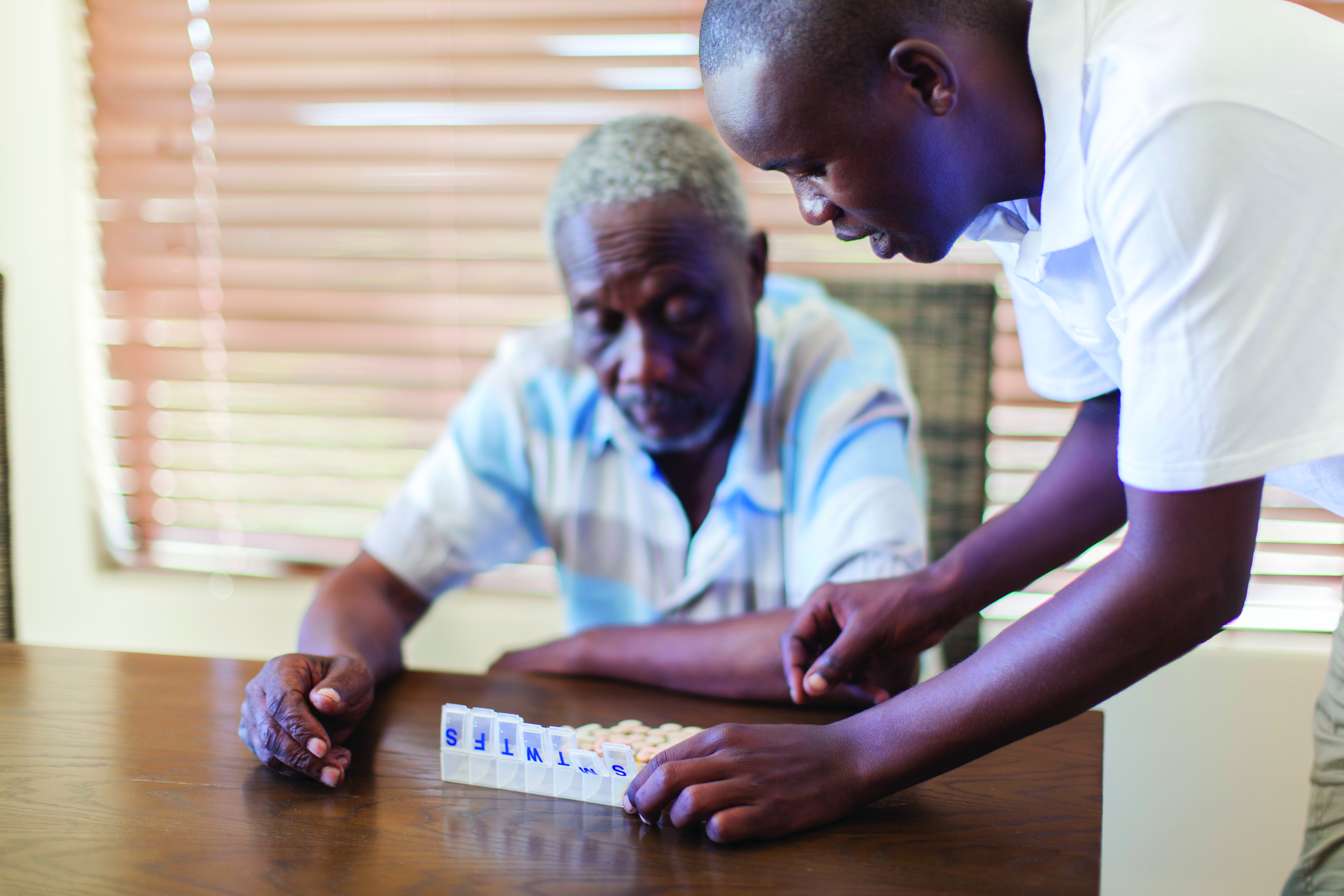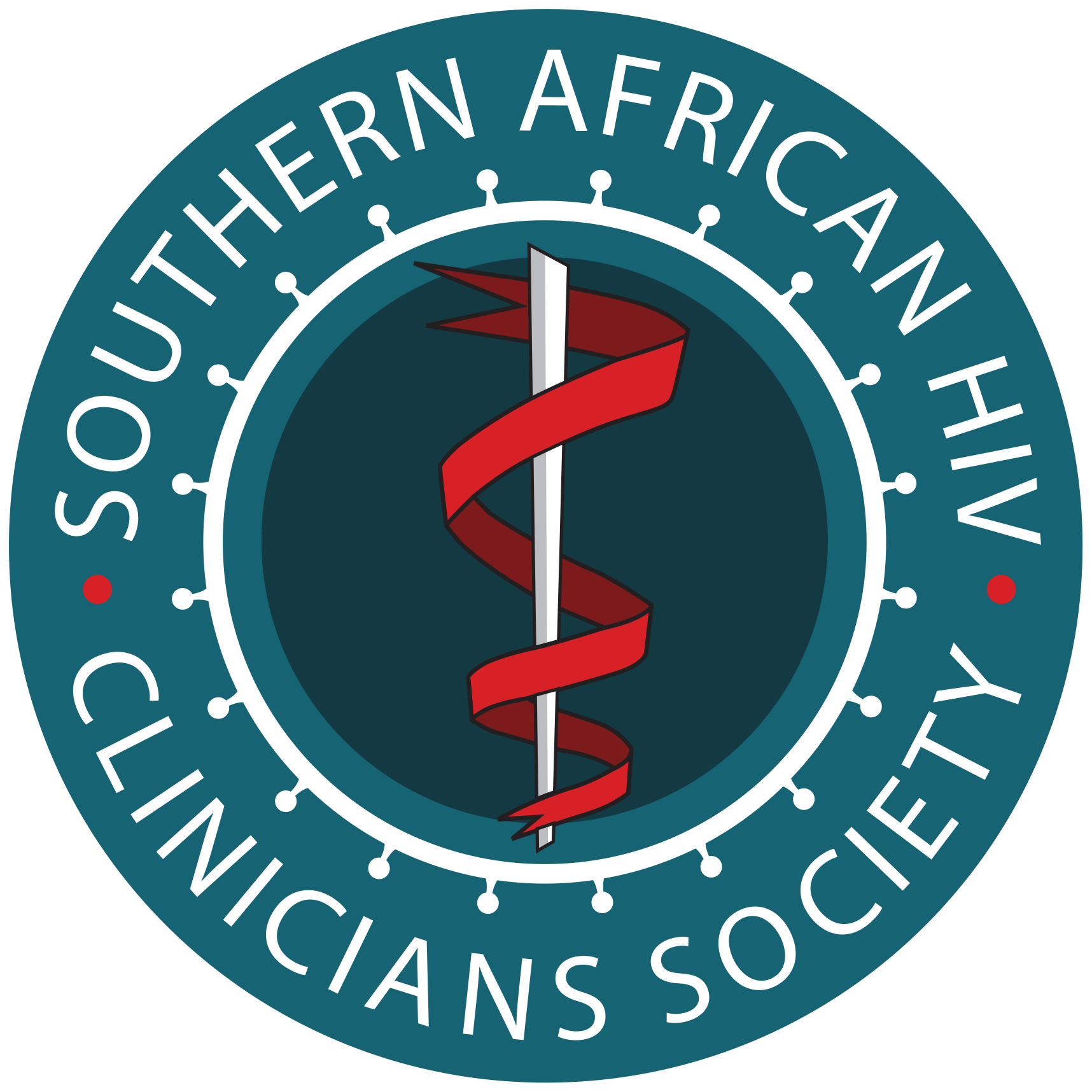ART Guidelines
References

 Key points
Key points - Delays to starting ART should be minimised. Several studies have demonstrated that it is safe to initiate ART on the same day as diagnosis or on receipt of the CD4+ count result, with the chief benefit being improved retention in care.
- Screening for tuberculosis (TB), cryptococcal meningitis (CM) and other opportunistic infections prior to ART initiation is important since these conditions may necessitate delaying ART initiation.
- When a patient is virally suppressed and maintains adherence, HIV is not transmissible to their sexual partner/s. This is known as “Undetectable = Untransmittable (U=U)”.
All patients who are diagnosed with HIV should be initiated on ART as soon as possible. Exceptions to this include patients presenting with cryptococcal meningitis (CM) or central nervous system tuberculosis (tuberculous meningitis (TBM) or tuberculoma) – see below.
With ART-induced viral suppression, the CD4+ lymphocyte count usually increases, which is accompanied by a restoration of pathogen-specific immune function. For most patients, this results in a dramatic reduction in the risk of HIV-associated morbidity and mortality. For patients who start ART with preserved CD4+ counts, ART is able to prevent the decline in CD4+ count observed in untreated patients and thereby prevent clinical complications of HIV infection. The benefits in morbidity and mortality extend to patients with relatively preserved CD4+ counts. The START and TEMPRANO ANRS 12136 trials showed significant individual clinical benefit when starting ART immediately in patients with CD4+ counts > 500 cells/μL rather than deferring until a certain lower CD4+ threshold or clinical indication was met 53, 54
The HPTN 052 trial showed that treating the HIVpositive partner in a serodifferent relationship with ART was associated with a 93% reduction in transmission risk to the HIV-negative partner, with the only linked transmissions occurring from partners without a suppressed VL. 55 Further evidence in serodifferent couples from the PARTNER, PARTNER2 and Opposites Attract trials have confirmed that HIV is not transmittable when the VL is suppressed and adherence is maintained. 56- 58 “Undetectable = Untransmittable (U=U)” messaging is an important component of this. Community-level evidence has also demonstrated a reduction in HIV incidence as ART rollout is scaled up. 59, 60 Therefore, early ART initiation has significant public health benefits.
In patients who are diagnosed with HIV during acute seroconversion, we advise counselling and initiating ART as soon as possible. Expedited ART initiation is preferable as there is evidence that this may limit the size of the HIV reservoir. 61 Additional counselling once the patient is established on ART may be required for patients who start ART in this acute stage because there is limited time for extensive pre-ART counselling and there is often considerable psychological distress around this time.
A minority of patients (< 1%) have very effective immune control of HIV infection and can control HIV viraemia at undetectable levels even in the absence of ART – termed ‘elite controllers’. 62 While definitive data are lacking for this patient subgroup, we advise initiating ART in elite controllers too, as indirect evidence suggests a potential benefit. Elite controllers still have evidence of chronic immune activation and inflammation that may drive noninfectious morbidities. 63 Elite controllers have also been shown to have a higher rate of hospitalisation than patients who are virologically controlled by ART. 64 Furthermore, a prospective study of HIVpositive ‘controllers’, who were able to control viral replication to < 500 copies/mL, showed that ART led to improvements in markers of immune activation and immune exhaustion, and a slightly improved self-reported quality of life. 65 This trial included elite controllers.
One important consideration in such patients is that careful attention should be paid to confirming the diagnosis of HIV before starting ART. These patients typically have a positive HIV ELISA test, undetectable HIV VL, CD4+ count in the normal range and are clinically well. The possibility of a false-positive HIV ELISA test should be excluded either by qualitative HIV DNA PCR or Western Blot assay. If the patient previously had a detectable VL, then this would also serve as confirmation. Such patients may need to be discussed with a laboratory virologist to assist with confirmation of HIV status.

Common pitfall: Not confirming the HIV status of an ‘elite controller’. If such patients have been diagnosed with HIV based on an HIV ELISA or rapid detection test, then confirmation of their HIV status should be sought by additional testing methods to exclude the possibility of a falsepositive result.
Several studies have demonstrated that it is possible to initiate ART safely on the same day as HIV diagnosis or reporting of the CD4+ count result. 66- 68 These studies have demonstrated less overall loss to follow-up when ART is initiated immediately in selected patients. Now that treatment is recommended irrespective of CD4+ count, this same-day strategy should be considered as a means to improve retention in care.
Considerations when deciding to initiate ART on the same day as diagnosis:
- The patient should be motivated to start immediately.
- Same-day initiation is not an adherence support ‘short cut’; ongoing support can occur in the days and weeks immediately after initiation.
- Patients starting TDF (who are the majority) should be contactable in the event of an eGFR < 50 mL/min/1.73m2, and told to return to the clinic immediately.
- A serum/plasma CrAg test should be done in patients with a CD4+ count < 200 cells/μL; again, the patient should be contactable in the event of a positive result, and must be advised to return to the clinic immediately.
- Symptom screening for TB and CM before initiation of treatment remains important, and a positive screen requires further investigation prior to ART initiation.
Medical reasons to delay ART initiation are outlined in Table 7.
| TABLE 7: Medical reasons to delay antiretroviral therapy initiation. | |
| Reason | Action |
|---|---|
| Diagnosis of CM | Defer ART for 4–6 weeks after start of antifungal treatment. |
| Diagnosis of TBM or tuberculoma | Defer ART until 4–8 weeks after start of TB treatment. |
| Diagnosis of TB at non-neurological site | Defer ART up to 2 weeks after start of TB treatment if CD4+ count ≤ 50 cells/μL and up to 8 weeks if CD4+ count > 50 cells/μL. |
| Headache | Investigate for meningitis before starting ART. |
| TB symptoms (cough, night sweats, fever, recent weight loss) | Investigate for TB before starting ART. |
| Significantly abnormal LFTs (ALT > 200 U/L or jaundice) or acute kidney injury that is expected to resolve soon | Investigate and address the cause before starting ART, including other drugs causing DILI and acute kidney injury. |
| ART, antiretroviral therapy; ALT, alanine transaminase; CM, cryptococcal meningitis; DILI, drug-induced liver injury; LFTs, liver function tests; TB, tuberculosis; TBM, tuberculous meningitis. | |
Decisions regarding the timing of ART in patients with TB should generally be based on the CD4+ count.
- CD4+ count ≤ 50 cells/µL: ART should be regarded as urgent, with the aim to start therapy within 2 weeks following the commencement of TB treatment. A meta-analysis of randomised controlled trials (RCTs) has demonstrated that this approach reduces mortality. 69 It is advised to commence ART once it is clear that the patient’s TB symptoms are improving and that TB therapy is tolerated. The exception to this is in the case of CM or TBM (see below). It is important to book an ART initiation date and track the patient if they do not return in order to decrease loss to follow-up in this high-risk group.
- CD4+ count > 50 cells/µL: ART can be delayed to start within the first 8 weeks after starting TB treatment, but no later. However, if the patient has other serious opportunistic infections, then ART should be initiated within 2 weeks after TB treatment is started (with the exception to this being CM or central nervous system tuberculosis). The longer delay before commencing ART in this group is anticipated to reduce the risk of immune reconstitution inflammatory syndrome (IRIS) (see module 26). The aforementioned meta-analysis of RCTs did not show a higher risk of AIDS progression/mortality in this group when ART initiation was delayed until approximately 8 weeks after starting TB treatment, but did show a reduced risk of TB-IRIS. 69
Patients with tuberculous meningitis (TBM) are an exception to the above: starting ART immediately or at 2 months following diagnosis was shown to have similarly high mortality, with more complications in the immediate group. 70 We recommend starting ART 4–8 weeks after TBM diagnosis.
There are important potential drug interactions and shared side-effects when ART is co-administered with TB therapy (see module 18). When ART is commenced, patients should be warned that TB symptoms or signs may temporarily worsen, and new features may occur in the first 3 months as a result of TB-IRIS (see module 26).
For patients with CM, the optimal time to start ART is 4–6 weeks from the time of starting CM treatment. The COAT (Cryptococcal Optimal ART Timing) trial demonstrated significantly higher mortality in patients who started ART in hospital 1–2 weeks after CM diagnosis than in those starting 5–6 weeks after diagnosis. 71
For patients diagnosed with cryptococcal antigenaemia who have CM excluded by lumbar puncture (LP), ART can be commenced immediately.

Patients commenced on ART prior to a positive reflex CrAg result should be referred immediately for LP to exclude CM. In patients with a negative cerebrospinal fluid (CSF) CrAg result (i.e. CM is excluded), ART can be continued, and fluconazole pre-emptive therapy should be initiated. However, in patients with a positive CSF CrAg result (i.e. with cryptococcal meningitis), we recommend temporary ART interruption. ART may be reinitiated after 4 weeks of CM therapy.
For further details refer to the 2019 Southern African HIV Clinicians Society guideline for the prevention, diagnosis and management of cryptococcal disease among HIV-infected persons.
In the case of most opportunistic infections (OIs) and acute illnesses (e.g. pneumocystis or bacterial pneumonia), the aim should be to initiate ART within 2 weeks of the patient commencing treatment for that infection. 72 In patients with severe Kaposi’s sarcoma and lymphoma, or other severe HIV-associated conditions such as immune thrombocytopenia (ITP) or thrombotic thrombocytopenic purpura (TTP), ART counselling should be expedited and ART should be initiated as soon as possible.
It is imperative that patients initiated on ART while in hospital are adequately linked to care after discharge. 73
In patients with HIV admitted to hospital and unable to take oral medications, e.g. patients in the intensive care unit (ICU):
- If the patient is receiving ART, then this should be continued – through nasogastric tube (NGT) if necessary – and only interrupted if the gastrointestinal tract is not functional (e.g. ileus).
- If the patient is not yet receiving ART, then it should not be commenced if the reason for admission is an acute critical illness or injury. There are several potential problems associated with commencing ART in this setting, including a lack of adequate counselling, gastrointestinal dysfunction, renal dysfunction, malabsorption and possible development of resistance.
- There are no intravenous options for ART. In patients admitted to the ICU for prolonged periods, ART initiation in the unit should be considered after multi-organ failure has resolved. Certain ART preparations should not be administered via NGT. In general, paediatric syrups can be administered via NGT. A pharmacist should always be consulted regarding which ART drugs can be administered via NGT and how to do this.
